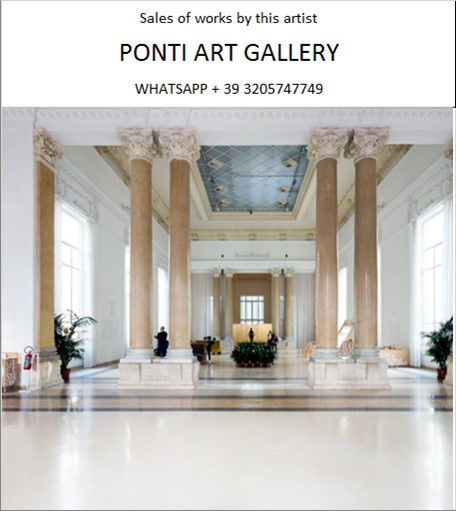Ponti Art Gallery is interested in buying and selling works
of art by this artist.

Simon Hantai Biography
Simon Hantaï, a pivotal figure in the post-war European art scene, was born on December 7, 1922, in Bia, Hungary. His journey from a small Hungarian town to becoming an influential artist in France is a testament to his relentless pursuit of innovation and his profound impact on abstract art. Hantaï's work, characterized by his unique pliage (folding) technique, bridges the gap between Surrealism, Abstract Expressionism, and later, Conceptual art, making him a central figure in the narrative of 20th-century art.
Hantaï's early life in Hungary was marked by significant events that shaped his artistic vision. At the age of eight, he experienced temporary blindness due to diphtheria, an event that profoundly influenced his later work, emphasizing the importance of the unseen and the role of chance in the creative process. He began his formal art education at the Budapest School of Fine Arts in 1941, where he was exposed to the works of European modernists, which would have a lasting impact on his artistic development. His early work was figurative, but even then, Hantaï was exploring the boundaries of traditional painting.
In 1948, amidst the political turmoil in Hungary, Hantaï moved to Paris, a city that would become his lifelong home and the crucible for his artistic evolution. In Paris, he quickly became associated with the Surrealist group led by André Breton. Breton's influence is evident in Hantaï's early experiments with automatism and his exploration of the subconscious. However, Hantaï's encounter with the work of Jackson Pollock in the early 1950s marked a turning point in his career. Pollock's action paintings inspired Hantaï to move beyond Surrealism and explore the materiality of the painting process itself.
By 1960, Hantaï had developed his signature pliage technique, which involved folding the canvas into various configurations, painting the exposed surfaces, and then unfolding it to reveal complex patterns of color and negative space. This method allowed Hantaï to relinquish a degree of control over the work, introducing an element of chance and emphasizing the process of creation over the final product. The pliage technique led to several series of works, including the "Mariales," "Meuns," and "Tabulas," each exploring different aspects of folding and its effects on the painted surface.
Hantaï's work in the 1960s and 1970s was characterized by a rigorous investigation of the possibilities of the pliage method, resulting in works that were at once visually arresting and conceptually rich. His paintings from this period are notable for their vibrant colors, intricate patterns, and the dynamic interplay between painted and unpainted areas of the canvas. Hantaï's approach to painting was both a continuation of and a departure from the legacies of Pollock and the Surrealists, as he sought to redefine the role of the artist and the nature of the artwork itself.
Despite his significant contributions to the art world, Hantaï was known for his reclusive nature. In 1982, after representing France at the Venice Biennale, he withdrew from the public eye, refusing to exhibit his work for many years. This period of self-imposed isolation was not, however, a cessation of artistic activity; rather, Hantaï continued to work prolifically, exploring new directions in his art.
Simon Hantaï passed away on September 12, 2008, in Paris, leaving behind a legacy that continues to influence contemporary artists. His innovative use of the pliage technique challenged conventional notions of painting and opened up new avenues for abstraction. Hantaï's work is celebrated for its originality, its profound engagement with the material and conceptual possibilities of painting, and its pivotal role in the development of post-war European art.
Simon Hantai Quotes and Sales
of Works
Ponti Art Gallery selects and deals with paintings by the
artist. Upon request, we provide free estimates and
evaluations, communicate prices, quotations, and current
market values.
If you are interested in BUYING or SELLING works by the
artist, contact us immediately.
If you wish to sell or receive an evaluation of the
works:
Send us a frontal photo of the painting, one of the back,
and one of the signature. Also, indicate the dimensions of
the work. Inform us about the purchase origin of the work
and any kind of available documentation (purchase
receipts, certificates of authenticity, publications). One
of our operators will respond to you on the same day. We
guarantee maximum confidentiality and extreme
professionalism.
If you wish to purchase works by the painter: Contact us
and let us know your request. We will inform you about the
available works. We also offer the possibility to
subscribe to our NEWSLETTER, through which you will be
informed at the beginning of each month about the latest
acquisitions of the art gallery.
You can send us pictures of the work:
